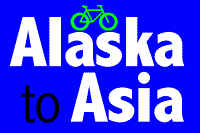|
|
|
 |
 |
Adventures: Iran & Bahrain
| Click a thumbnail to enlarge |
Iran Preparations for Iran started in Turkey. Juliet bought a stylish full-length puffy-sleeved gold-buttoned black coat with accompanying headscarf. Though accepting this dress code (known as hejab) for both religous and legal reasons, it proved tiresome to wear at all times when in public. However, it was not as bad as the three layers worn by most Iranian women, topped with an unwieldy black chador which must be constantly held with the hands or teeth. At the border we found ourselves waiting with a group of 20 Iranians plus an assortment of what looked like siezed goods. After someone banged on the "Iran" door for several minutes, an official opened it, took our passports, and disappeared. Thankfully, they reappeared 10 minutes later and we entered Iran. In Iran, the most immediate difference was the cars: 9 out of 10 of them are Hillman Hunters, as sold in Britain in the 1950s, but still made here. Language was set to be a challenge - the Farsi language uses the Arabic script and numbers.
Across the Desert
The News Credit Cards are rarely used in Iran, so paying for our flight involved a half-hour visit to the bank to draw out large bundles of rials (the biggest value note is worth less than one pound). We carried a backpack of money to the travel agents, who enlisted several staff members to count them.
Iranian Party The people in North-West Iran speak Azerbaijani (a Turkish dialect) and many feel that they have more in common with neighbouring Azerbaijan. At the party, everyone showed off their love of, and pride in their traditional culture. Everyone took part, either playing a musical instrument, singing, reading poetry or dancing. In the home, women took off their hejab to reveal typical western clothes. We were invited for some illicit alcohol from the corner of the kitchen. Many people wanted to practice English with us and all of them reassured us that they were horrified about the attacks in the USA. We left the party glowing with the warmth and hospitality that the people had shown us.
On the Bus After a 16-hour bus journey, we arrived in Esfahan. Here we enjoyed the stunning Emam Khomeini square, named for the controversial but revered leader of the Islamic Revolution. The Emam mosque was the most stunning we have yet visited with fabulous turquoise, blue, yellow and orange tiles and magnificent domes and minarets. We also enjoyed chay on one of the historic bridges. From Esfahan, we travelled to Shiraz, which ironically gave its name to the grape (which is no longer grown here). Cycling into Shiraz, we caused a traffic jam as motorbikes and cars drove alongside and behind us, waiting for their turn to ask our names and country. This was typical of the curiosity and enthusiasm of Iranians. We visited the 2500-year-old city of Persepolis and were invited to a local's house. Again, this was an excellent insight into Iranian lifestyles. The house was huge and contained plush Persian carpets - but no furniture. The evening's entertainment came when he invited to Juliet to remove her headscarf by pointing at "please undress" in the medical section of our phrasebook! In Shiraz we experienced the most powerful display of Muslim worship. At a shrine, hundreds were kissing the doors and tomb and reciting from the Quran. On to Yazd, one of the worlds oldest cities. Cycling from the bus station we were escorted by enthusiastic motorcyclists. The labyrinthine old town seemed to be made of mud and straw and was perfect for cycling as the streets are too narrow for cars. Finally, to Tehran we battled with crazy traffic including hundreds of motorbikes for whom traffic lights and one-way streets are definitely optional, and pedestrial walkways are handy lanes to avoid gridlocked streets.
Opinions of Iran We are aware that it was the more liberal people who came to talk to us. The English language Tehran Times seems to portray an anti-US/Israeli slant on the news with the reformist Iran Daily presenting reports very much in favour of western links. Newsagents sell photos of bloody soldiers who were martyred in the "Imposed War" (Iran-Iraq). The former US Embassy, known as the "US Den of Espionage" is covered by artistic anti-US paintings. Some parts of the culture we still don't understand. On the way to Tehran airport we stopped to buy bread. The shopkeeper tried to charge far in excess of the usual price, so we went to leave - at which point he called us back and gave us the bread free as a gift! We left Iran with fond memories, particularly of the superb hospitality of the people. If, after the current world situation has settled, Iran is unchanged, we would thoroughly recommend a visit for those who want to experience a remarkable country with a strikingly different culture and rich history.
To Bahrain We took to the 37 degree, 98% humidity streets to look around. We were surprised to find that a couple of blocks from the beach and fancy hotels was a mini-India, with curry houses and tailors (all the staff in our hotel were originally from India). There was an eclectic mix of dress - western T-shirts and jeans, India dhobis (long checked skirts for men), shalwar kameezes and arab full-length white robes. We eventually found our way back to the expat enclave, with Next and Dairy Queen.
|